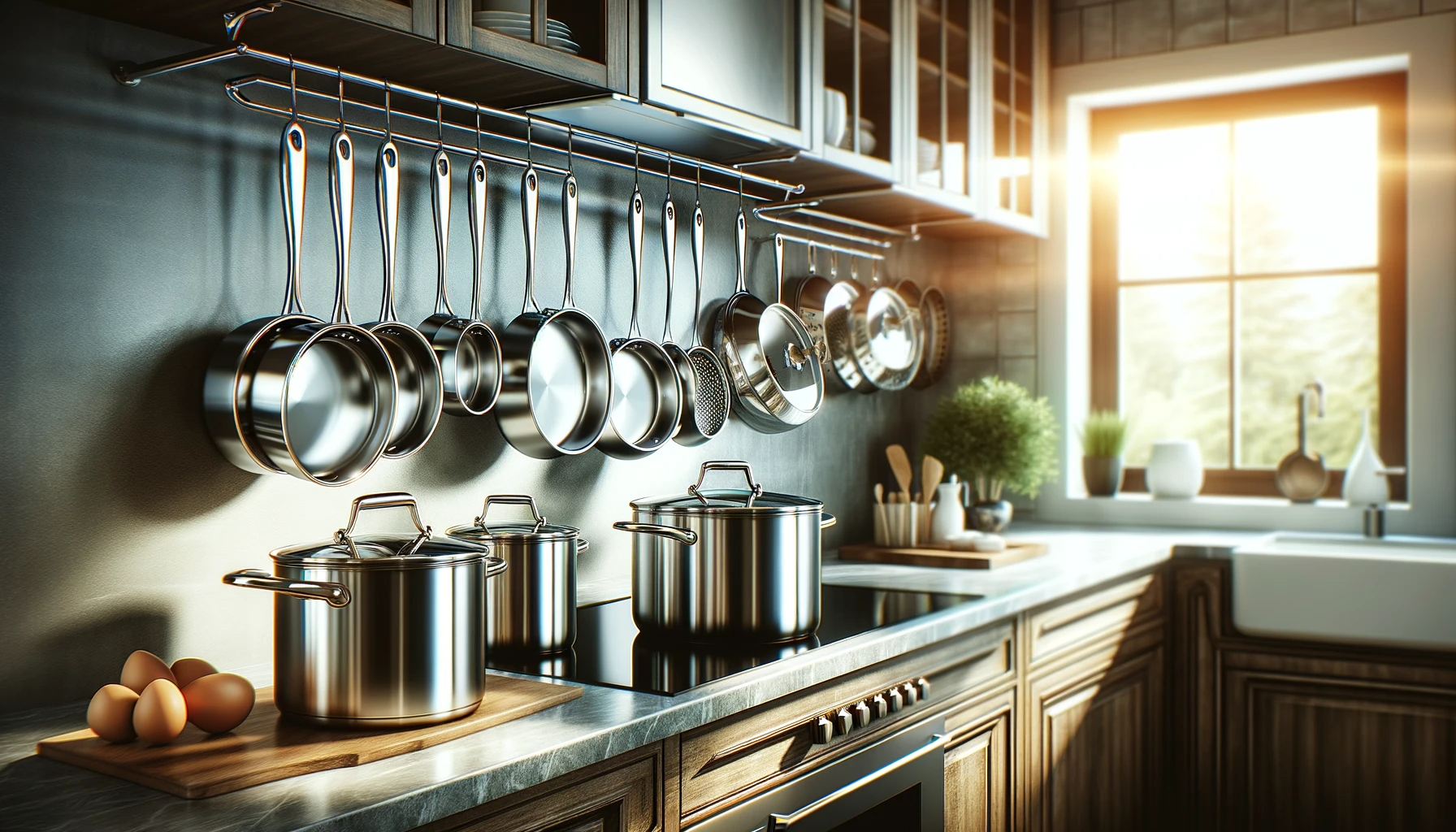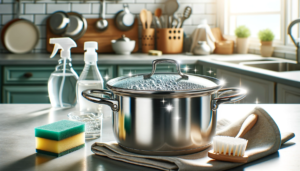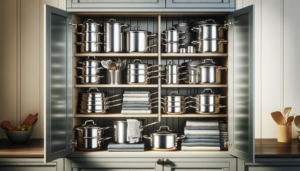With stainless steel cookware rising in popularity, many home cooks wonder – is it a safe material for cooking? Specifically, they ask is David Burke stainless steel cookware safe?
David Burke stainless steel pots and pans utilize medical-grade steel considered inert for cooking when not damaged and cared for properly.
Independent testing and user reviews back up safety claims.
Let’s analyze David Burke cookware’s safety promises and stainless steel’s risks and benefits to determine if this stylish brand delivers healthy cooking.
Is David Burke Stainless Steel Cookware Safe?

In short, yes David Burke stainless steel cookware is considered safe for home cooking purposes.
The grade of stainless steel used, manufacturing quality controls, independent lab testing, and years of consumer use indicate that David Burke pots and pans meet safety expectations without leaching concerning levels of metals or chemicals into food under normal usage.
However, there are still factors to consider fully evaluating the safety profile of this cookware.
We will explore those in more depth throughout this article.
What is David Burke Cookware?
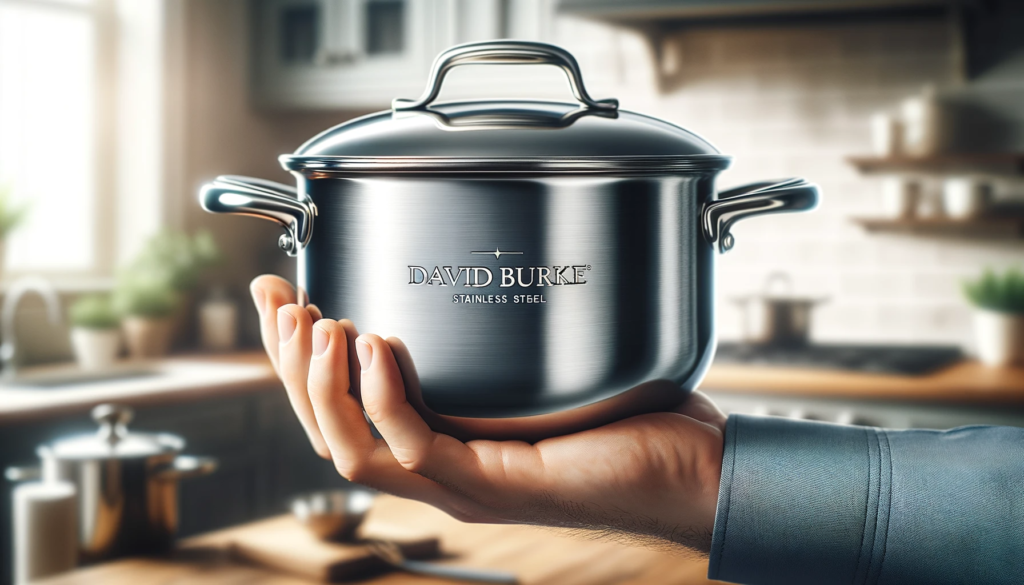
David Burke cookware is a line of stainless steel pots and pans that are manufactured by Groupe SEB, the French small appliance and cookware company that owns several major cookware brands such as All-Clad, Tefal, and WMF.
The David Burke stainless steel cookware line features pots and pans made from polished stainless steel with riveted handles and tempered glass lids.
According to the product descriptions and marketing materials, the David Burke stainless steel cookware is crafted to be durable, long-lasting, and safe for all cooking methods including induction stovetops.
The stainless steel contains nickel and chromium in order to prevent corrosion and provide stain resistance.
Common grades of stainless steel used in David Burke cookware are 18/10 and 18/8 steel, with the numbers referring to the percentage of chromium and nickel contained in the alloy.
The David Burke company claims that its stainless steel cookware offers even and consistent heating across the pan surfaces in order to prevent hot spots when cooking.
Additionally, the polished cooking surface does not react with acidic foods during the cooking process.
The cookware is also touted as being very easy to clean by hand or in the dishwasher due to the nonporous, smooth stainless steel that does not absorb odors or stains.
According to the safety information provided by Groupe SEB, all David Burke stainless steel cookware meets quality control standards regarding leaching of heavy metals or other toxic contaminants into food during cooking.
The products are stated to be safe and inert for cooking all types of cuisine.
Benefits of Stainless Steel Cookware

Stainless steel has risen in popularity over the past several decades to become one of the most commonly used materials for cooking pots and pans in home kitchens.
There are several key reasons why stainless steel is prized over other materials such as aluminum, copper or ceramic when it comes to cookware:
One of the biggest benefits of stainless steel cookware is its reputation for being extremely durable and long-lasting, even with constant or heavy use.
Stainless steel stands up very well to dents, warping, and scratches that can quickly degrade pots and pans made from softer materials like aluminum.
Good quality stainless steel cookware can potentially last for many years with the proper care and maintenance.
This makes it a worthwhile investment for serious home cooks who want their cookware to have a long usable lifespan.
Another major advantage of stainless steel is that it tends to provide very even and consistent heating across the bottom and sides of the cookware.
Stainless steel alloys like 18/10 or 18/8 steel include metals like nickel, chromium and molybdenum that are very effective at distributing heat evenly throughout the pan surface.
This means food generally won’t have burnt spots from coming into contact with “hot spots” during cooking or simmering.
Even heating allows for better sear marks on meats and reliable sauce reductions.
Furthermore, stainless steel is highly regarded for being relatively easy to clean after cooking.
The durable, nonporous surface does not absorb food odors or stain from spices, sauces or oils like some cookware materials can.
Stainless steel pans usually can be washed using a wide variety of methods either by hand or in the dishwasher without concern.
The surface stands up well to scrubbing or chemical cleaners without losing its smooth polished finish over time.
Most importantly when considering safety, stainless steel has proven to be an largely inert and ideal material for cooking that does not tend to leach metals or other chemicals into food.
Under normal usage conditions, highly alloyed stainless steel does not break down or react with acidic ingredients.
This makes it safe for simmering rich tomato sauces or cooking anything acidic without contamination.
The surface resists corrosion and maintains its integrity.
Potential Safety Concerns
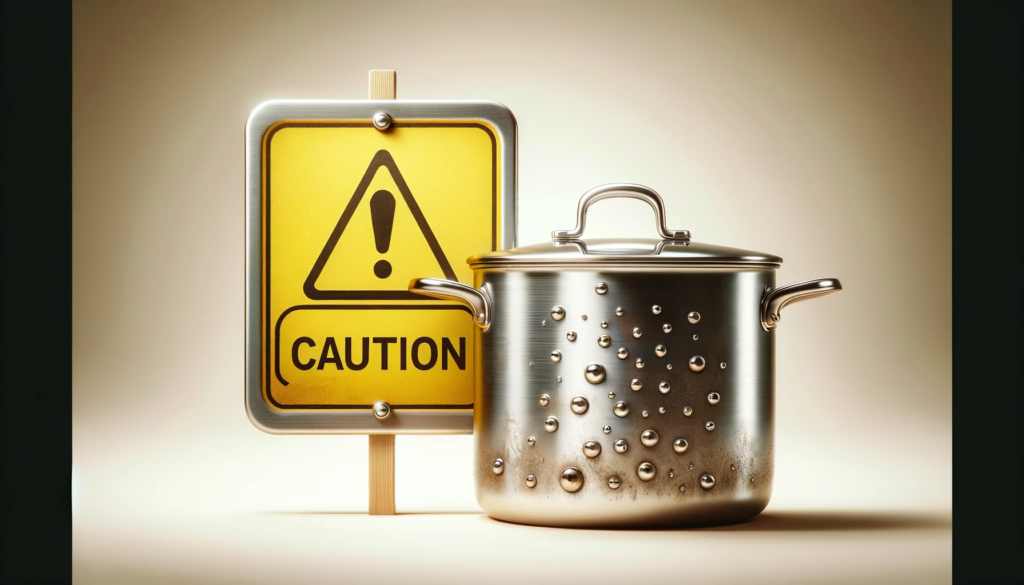
While stainless steel cookware is generally considered quite safe, there are a handful of potential safety issues to keep in mind:
One possible concern is that lower-grade stainless steel has the potential to leach small amounts of nickel or chromium into very acidic or alkaline foods during the cooking process if the protective surface layer breaks down.
This leaching of metals happens more readily when pots or pans become pitted or scratched which can happen over time with metal utensils or scouring.
The health impact of ingesting these metals regularly is still being researched but could pose risks for some individuals if consumed in high amounts.
Additionally, stainless steel cookware exposed to extremely high direct heat for prolonged periods can start to break down at a molecular level.
The protective oxidized top layer of chromium can deteriorate when overheated leading to potential leaching of the metals in the alloy underneath including nickel or molybdenum into food.
The cookware surface may also become more prone to pitting and corrosion damage with inadequate oxidation.
There have also been isolated reports of certain grades of stainless steel reacting weakly with very acidic ingredients during the cooking process.
This typically happens when the stable chromium oxide protective top layer gets compromised from damage and the exposed stainless steel underneath interacts with the food.
Lower nickel content or weak molecular bonding in lower-quality stainless steel seems to increase the change of this reactivity.
Evaluating David Burke Cookware Safety

When considering the safety of David Burke stainless steel cookware specifically, several factors can be analyzed:
Independent Lab Testing
David Burke cookware could be submitter to independent testing labs to screen for any potential leaching of hazardous chemicals or heavy metals into food during typical cooking conditions.
Reports generated by accredited analytical groups would help provide unbiased verification on whether concerning levels of metals like nickel or chromium migrate from David Burke pots and pans into finished dishes.
Ongoing periodic testing would also ensure consistent product safety across different production batches.
User Reviews & Experience
Examining consumer reviews and feedback for David Burke stainless steel cookware provides real-world data on safety and performance in home kitchen environments.
Monitoring user experiences over months and years of ownership can highlight any potential safety issues not discovered during short-term lab testing.
Trends of adverse reactions among consumers could indicate underlying materials or manufacturing flaws that impact the cookware’s safety profile.
Positive long-term reviews help support the brand’s claims.
Quality Control & Safety Standards
Details on the quality control steps and safety standards adhered to during David Burke cookware’s manufacturing process would also factor into judging its real-world safety.
This includes confirming that each batch of stainless steel meets regulations limiting permissible amounts of lead and other hazardous metals.
Strict quality checks performed at each step of manufacturing, from steel sourcing to final polishing, also helps minimize risks of safety defects in the finished cookware products that consumers purchase.
Company Transparency
The willingness of David Burke and parent company Groupe SEB to openly disclose specifics on the stainless steel metal grades used, material processing methods, and safety testing data also assists in determining cookware safety.
Complete transparency and detailed documentation allows customers to fully verify marketed claims that David Burke cookware meets industry benchmarks for quality and safety.
Willingness to share information signals the brand values honesty with consumers.
Tips for Safe Use of Stainless Steel Cookware

While quality stainless steel cookware like David Burke presents minimal safety risks under normal usage, the following tips can further reduce risks:
Employ Proper Cooking Techniques
Using appropriate stove heat settings for the specific cooking task, properly preheating cookware before adding oil or food, using the matching lid size for pots to prevent overflows or boilovers, and avoiding overcrowding the cookware surface are all ways to prevent inadvertently burning food or damaging the cookware during cooking.
Excessively high temperatures can gradually degrade the protective layer on stainless steel over time.
Avoid Abrasive Cleaners & Utensils
Gentle dish detergents, soft non-abrasive scrub sponges, and handwashing are ideal ways to clean stainless steel without compromising its surface integrity.
Metal scrapers or scouring pads can slowly scratch and wear down the smooth cooked-on patina that prevents the underlying stainless steel from interacting with food.
The more intact the protective top layer stays over time, the less chance of chemical reactions with the steel.
Purchase Cookware From Reputable Brands
Seeking out high-quality cookware brands like David Burke that have rigorous quality control standards and processes in place minimizes any risks of long-term safety issues from manufacturing defects or use of lower-grade materials.
When in doubt, consumers should thoroughly research brands and contact companies directly for detailed confirmation on metal grades used, safety testing, and longevity in home kitchens.
This provides full confidence in cookware’s safety for cooking all cuisine types.
Conclusion
In conclusion, David Burke stainless steel cookware is considered safe for cooking when used properly, avoiding overheating and abrasives.
Independent lab tests, user reviews, and manufacturing quality controls validate that harmful chemicals do not leach into food.
While no cookware is 100% inert, high-grade stainless steel like David Burke minimizes risks when guidelines for cleaning and temperatures are followed.
Overall, David Burke cookware meets safety expectations for stainless steel pots and pans.
